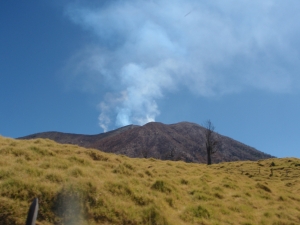eSTEeM
Centre for Scholarship and Innovation
Highlighting the importance of community engagement
9th April 2014
The past decade has seen a number of notable natural disasters: the Boxing Day tsunami of 2004, hurricane Katrina in 2005, the 2010 Haiti earthquake, 2011 Japan quake and more recently typhoon Haiyan, to name just a few. These all came at huge human, environmental and economic costs, which are set to increase in future natural disasters as an increasing global population forces larger numbers of people to live in high risk areas.
A solid understanding of the natural processes used to be considered key to minimise the impacts of disasters. However, in the past few decades it has been recognised that natural disasters do not occur in a vacuum. Instead they are based in complex socio-economic and cultural settings. Understanding and interacting with these contexts, and combining this with insights derived from the physical sciences, is now paramount to comprehensive prevention and mitigation of the devastating effects of natural phenomena.

Investigating different ways of disseminating information while connecting with publics led me to engagement. Subsequently, I have recently facilitated collaborative workshops at Turrialba volcano, Costa Rica. These involved my colleagues at the national volcano monitoring organisation OVSICORI, local authorities and members of the local population.
The workshops were centred on the theme of ‘hazard preparedness’, one of the early stages in the disaster risk management (DRM) cycle. Instead of presenting a monologue informing the communities how to prepare, the main goal of the workshops was to listen to the local communities and better understand their viewpoint on why they have, or in many cases haven’t, prepared for a volcanic disaster. To achieve this a number of participatory activities had been prepared. These allowed for contemplation and identification of perceived barriers but also, perhaps more importantly, the formulation of potential solutions.
During the coming months the insights gleaned from the workshops will be written up into a peer-reviewed paper, a format inaccessible and potentially incomprehensible to those who have the biggest stake in this work. Therefore, to truly make this ‘engaged research’ we aim to also provide a practical response through further collaboration with the local communities.
Image: Saskia van Manen
News
- An eSTEeM conference with a difference 7th May 2025
- Class of 2025 up and running 7th May 2025
- Registration now open for the 14th eSTEeM Annual Conference 18th March 2025
- Launch of the eSTEeM Annual Conference Proceedings 2024 13th February 2025
- 14th eSTEeM Annual Conference 2025 call for abstracts now open 14th January 2025